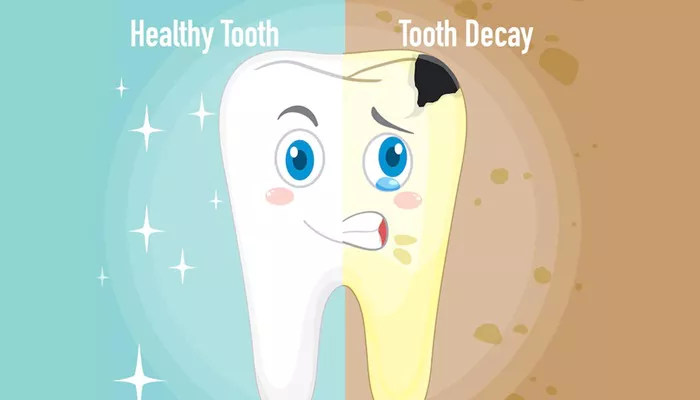Smileactives is a teeth whitening brand that offers over-the-counter products aimed at helping users achieve a brighter smile without visiting a dentist. These products include whitening gels, pens, and LED devices designed to be used at home.
The active ingredient in most Smileactives products is hydrogen peroxide, a common bleaching agent.
Why Is Smileactives So Popular?
Smileactives is well-known for its ease of use and convenience. Consumers often choose it because it doesn’t require custom trays or expensive dental visits. Marketing often emphasizes fast results and enamel-safe formulas, but how true are these claims?
What Is Tooth Enamel and Why Is It Important?
The Role of Enamel in Dental Health
Tooth enamel is the thin, outer layer of your teeth that protects them from physical and chemical damage. It is the hardest substance in the human body and acts as a barrier against plaque, acid, and temperature sensitivity. Once enamel is worn down, it cannot be restored naturally, so protecting it is essential.
Enamel Erosion and Its Causes
Enamel erosion is often caused by frequent exposure to acidic foods, beverages, and poor oral hygiene. Teeth whitening products, if used improperly or excessively, can also contribute to enamel damage. This makes it crucial to evaluate whether Smileactives may weaken or damage enamel over time.
Ingredients in Smileactives: Are They Safe?
Main Active Ingredient: Hydrogen Peroxide
Hydrogen peroxide is widely used in dental whitening products. In controlled amounts, it can effectively bleach stains from teeth. Smileactives typically contains 9% hydrogen peroxide, which is lower than in-office treatments but higher than some drugstore alternatives.
Potential Risks of Hydrogen Peroxide
While hydrogen peroxide is generally safe in low concentrations, overuse can lead to enamel erosion, gum irritation, or tooth sensitivity. Using whitening agents too often or in large amounts may thin the enamel over time. This could increase the risk of bleeding gums, tooth sensitivity, and even gum disease.
Does Smileactives Actually Damage Enamel?
Research and Clinical Evidence
Current research indicates that hydrogen peroxide, when used within recommended limits, does not significantly damage enamel. Smileactives products are designed to be non-abrasive and include enamel-safe concentrations. However, prolonged or improper use can still pose risks.
User Practices Matter
Improper usage—such as using the product more frequently than advised or combining it with other whitening agents—can lead to enamel weakening. Users should carefully follow instructions to avoid long-term harm.
Signs of Enamel Damage to Watch For
- Increased tooth sensitivity to hot or cold
- Changes in tooth color (yellowing)
- Rough or jagged edges on teeth
- Bleeding gums or gum recession
The Connection Between Whitening Products and Gum Health
Can Smileactives Cause Gum Irritation?
Some users report bleeding gums or irritation after using Smileactives. This is typically due to hydrogen peroxide contacting the soft tissues. While minor irritation may subside quickly, consistent discomfort may indicate improper use or a sensitivity issue.
Is There a Risk of Developing Gum Disease?
Smileactives is not directly linked to gum disease, but misuse can irritate gums. Repeated exposure to peroxide or failure to maintain proper oral hygiene while using whitening products may lead to inflammation. If left unchecked, this can escalate into gingivitis or periodontitis.
Expert Recommendations on Using Smileactives Safely
Follow Instructions Precisely
Always adhere to the product guidelines. Do not exceed the recommended frequency or amount. Overuse is a common cause of enamel and gum damage.
Monitor for Side Effects
If you notice increased sensitivity, bleeding gums, or other discomfort, stop use immediately and consult a dentist. Early detection of side effects can prevent long-term damage.
Use Complementary Products
Consider using fluoride toothpaste to strengthen enamel and mouthwash to soothe gums while whitening your teeth. These products help protect your dental health during treatment.
Alternatives to Smileactives for Sensitive Teeth
Whitening Toothpastes
Whitening toothpastes offer gradual results and are typically less abrasive. They may be a better option for individuals with sensitive enamel or a history of gum disease.
In-Office Whitening Treatments
Professional whitening under a dentist’s supervision is safer for people with weakened enamel or gum problems. Dentists can tailor treatments to reduce risks and improve outcomes.
Natural Whitening Methods
Some users explore natural alternatives like baking soda or oil pulling. While these are gentler, they may not deliver the same results. Always speak to your dentist before trying alternative methods.
Myths About Smileactives and Enamel Damage
Myth 1: All Whitening Products Destroy Enamel
This is false. Products like Smileactives are formulated to be enamel-safe when used correctly. Problems arise with misuse or overuse, not the product itself.
Myth 2: Bleaching Always Causes Bleeding Gums
Not everyone experiences bleeding gums. If you do, it may be due to an existing gum condition or product misuse. Seek dental advice if symptoms persist.
Myth 3: Whitening Means Sacrificing Dental Health
Teeth whitening doesn’t have to damage your mouth. With proper care, you can maintain healthy teeth and gums while achieving a whiter smile.
How to Protect Your Enamel During Whitening
Limit Acidic Foods and Drinks
Avoid sodas, citrus fruits, and vinegar-based foods, especially during whitening treatment. These substances can weaken enamel.
Brush Gently and Regularly
Use a soft-bristled toothbrush and brush twice daily. Aggressive brushing can wear down enamel and irritate your gums.
Visit a Dentist Regularly
Routine dental checkups help detect early signs of gum disease or enamel erosion. Your dentist can also offer guidance on safe whitening practices.
Conclusion
Smileactives, when used correctly, does not significantly damage enamel. It is formulated with enamel-safe concentrations of hydrogen peroxide. However, individual risk varies depending on usage habits and preexisting dental conditions. Monitoring symptoms like tooth sensitivity, bleeding gums, or discomfort is essential.
Maintaining good oral hygiene, following instructions, and seeking dental advice can help minimize risks. If you have gum disease, thinning enamel, or other oral health issues, consult a dental professional before starting any whitening regimen.

